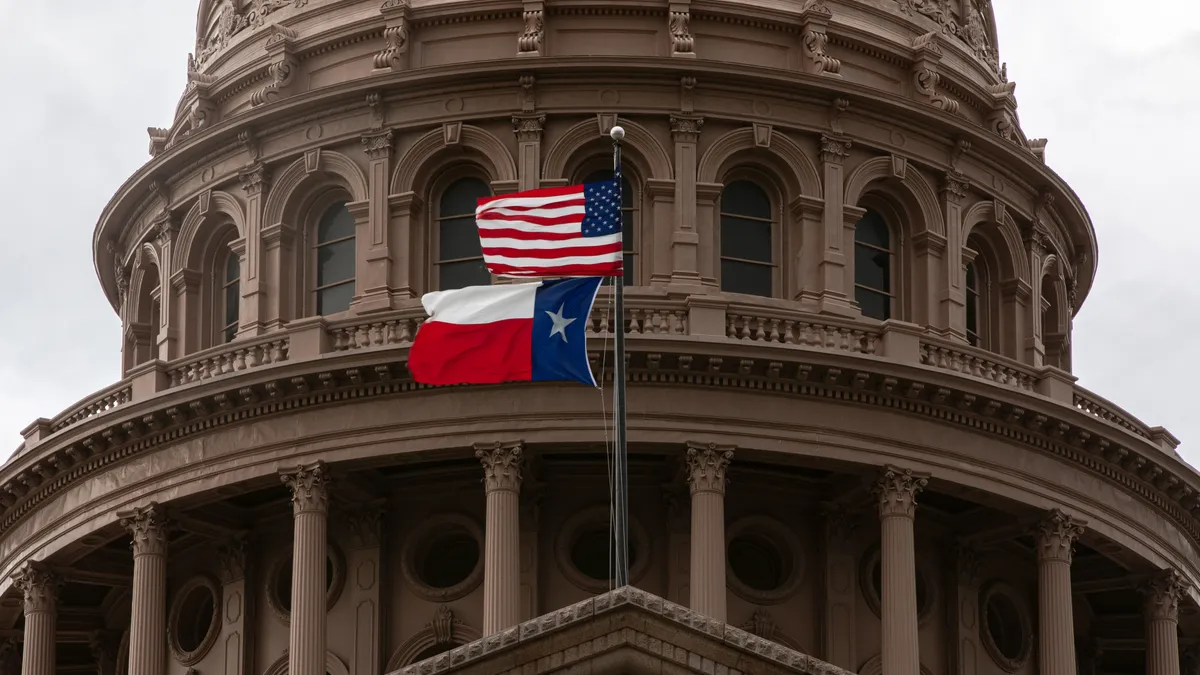The U.S. Department of Education on Monday dropped the final version of its new regulations governing distance learning. It's the third and final set of new rules the department has published over the past year, and they touch on a sprawling number of issues in higher education, including accreditation and online learning.
The department convened a committee early last year to negotiate the new regulations. They reached consensus on the language in April 2019, though some critics say important stakeholders were left out of the discussion.
In the announcement Monday, Education Secretary Betsy DeVos billed the rules as a way to foster innovation. "While we moved quickly at the start of the pandemic to provide temporary distance learning flexibilities for students, these new regulations provide a permanent upgrade to online and competency-based education," DeVos said in a statement.
The rules take effect in July 2021, but the department said institutions can use "the new flexibilities" as soon as they are published in the Federal Register.
Here are five key questions the new rules raise that colleges should know.
How often do the rules say instructors should interact with online students?
The Higher Education Act requires colleges to have "regular and substantive" interaction with their online students to remain eligible for federal financial aid. To meet the substantive standard, the new regulations say colleges should meet at least two of the following five criteria:
-
Provide direct instruction.
-
Give feedback on coursework.
-
Respond to questions about course content.
-
Facilitate a group discussion about the content.
-
Engage in other instructional activities the institution's or program's accreditor has approved.
But some online learning experts hope the department will release additional guidance on these standards.
"If I read (the rules) right, does that mean I can provide a course as long as I provide direct instruction and assessment, but I don't have to necessarily respond to questions?" said Russ Poulin, executive director of the WICHE Cooperative for Educational Technologies and a member of the negotiated rulemaking committee. "How does that work?"
Other experts worry the rules set too low of a bar for colleges. "Many institutions and programs will cater to the lowest common denominator of what they can do," said Clare McCann, deputy director for federal higher education policy at New America, a left-leaning think tank.
Can colleges use instructional teams?
The new regulations allow colleges to use instructional teams, rather than individual instructors, for distance education if the teams meet accreditor requirements. That's the system used by Western Governors University, one of the biggest online colleges in the U.S.
The department's internal watchdog asked Western Governors to return $713 million in Title IV funds after it took issue in a 2017 audit with the institution's instructional team model. But the department reversed the decision in early 2019, saying there was "ambiguity of the law and regulations" and that the university had made a "good faith effort" to follow them.
The department notes in its explanation of the final rules that such teams would be expected to include subject-matter experts and meet accrediting agency standards.
However, some worry how this policy could affect students. "I think we'll see a lot of deviation within the quality of these programs," said Michael Itzkowitz, a senior fellow of higher education at Third Way, a left-leaning think tank. "The biggest risk is that a lot of these programs will not engage in the type of direct instruction they have previously, and it will be years until we see what kind of effect this will have."
Did the definition of the credit hour change?
Federal funding for higher education mostly centers on the credit hour, which is a time-based unit that attempts to measure learning. Critics take issue with this system — including that it makes it hard for colleges to launch self-paced programs — but policy experts underscore its role in preventing credit inflation.
The department proposed changing the definition of the credit hour during the negotiated rulemaking session last year, but the final regulations leave it mostly intact. "We basically saw negotiators raise such significant concerns, that the department backed off some of its initial, more concerning proposals," McCann said.
How do the rules affect clock-hour programs?
Some programs use clock hours rather than credit hours to qualify for financial aid. Generally, vocational schools or hands-on training programs are more likely to use clock hours, which measure the amount of time students log in class, labs or internships. A credit hour, meanwhile, "reasonably approximates" at least one hour of classroom or direct faculty instruction and at least two hours of "out-of-class student work" each week during a typical-length term, the regulations say.
The department originally proposed that online clock-hour programs could only receive federal aid if they offered synchronous instruction, such as live lectures. But the final regulations also allow them to use asynchronous instruction, such as prerecorded videos, if schools use technology that can monitor how long students participate in an activity.
In its reasoning for the change, the department said it was persuaded by arguments that the earlier proposed requirements would be too restrictive. "The emergence of the COVID-19 pandemic has illustrated the need for institutional and student flexibility with regard to the time and place that coursework is completed," the agency wrote.
Yet some policy experts worry the change will leave students unprepared for their occupations. "Really what (the department is) saying is that we're going to allow these hands-on training programs to operate through basically prerecorded lectures, with no way for the institution to adequately monitor whether students have completed the hours of training that are required of them," McCann said.
Will it be easier to offer competency-based education?
The final regulations lower some barriers for colleges that offer competency-based education, which allows students to move through coursework as they demonstrate mastery of a concept or skill.
For one, it will be easier for colleges to launch direct assessment programs, which rely on tests and projects to demonstrate student learning. Currently, institutions have to get the department's approval for every direct assessment program they add. The new regulations, however, don't require the agency to sign off on subsequent programs offered at the same level.
And the regulations spell out how institutions can receive federal aid for their subscription-based programs, which typically let students complete as many courses as they can over a fixed period. Although the department initially proposed limiting these changes to direct assessment programs, the final regulations apply them to any Title IV institution using a subscription pricing model.
McCann said this could be concerning because direct assessment programs are subject to additional oversight from the department and accreditors that the other programs wouldn't be.
But others say the regulations bake in more protections for students. They have to meet progression requirements in their subscription-based programs or they can't receive subsequent financial aid disbursements, said Jillian Klein, senior vice president of government and regulatory affairs at Strategic Education and a member of the rulemaking committee. "That pacing progression requirement actually doesn't exist in the rest of the financial aid dispersing world."






















